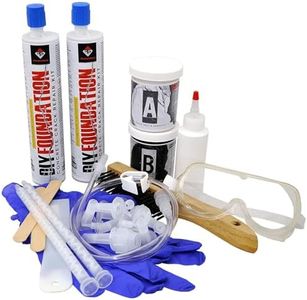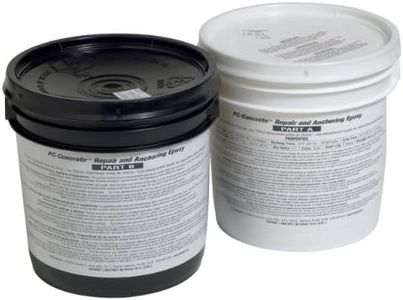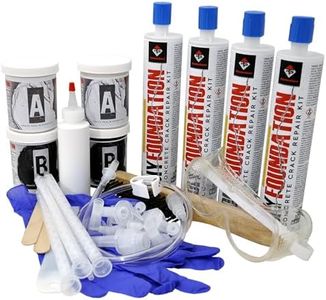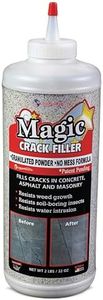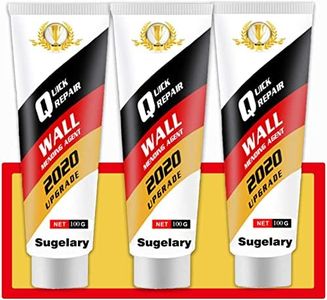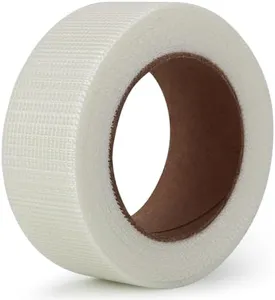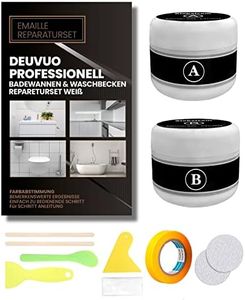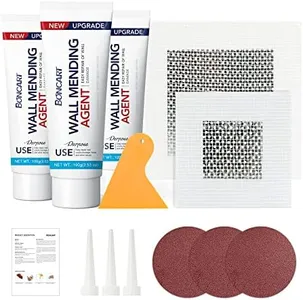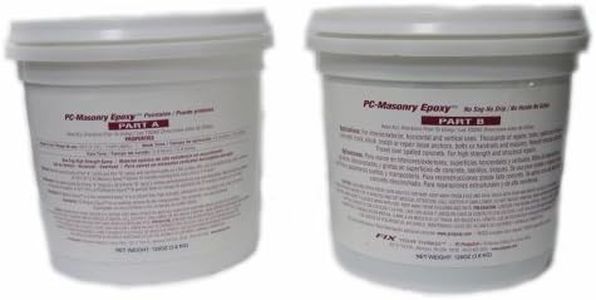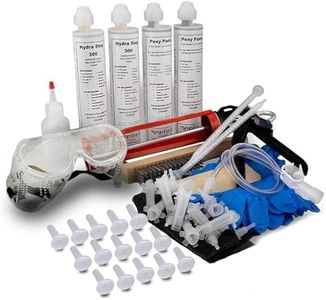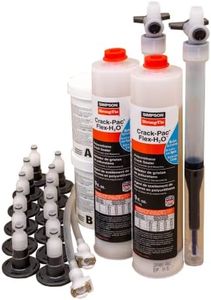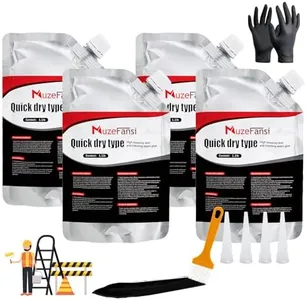10 Best Concrete Crack Repair Products 2025 in the United States
Our technology thoroughly searches through the online shopping world, reviewing hundreds of sites. We then process and analyze this information, updating in real-time to bring you the latest top-rated products. This way, you always get the best and most current options available.

Our Top Picks
Winner
PC Products PC-Concrete Epoxy Adhesive Paste for Anchoring and Crack Repair, Two-Part 102 oz in Two Pails, Gray 71021
Most important from
1875 reviews
The PC Products PC-Concrete Epoxy Adhesive Paste is designed for repairing cracks and anchoring bolts or rods in concrete and similar materials. It comes as a two-part epoxy paste that creates a strong bond, making it suitable for cracks that require a durable, permanent fix. Its high-tack formula is resistant to moisture, allowing you to work in damp conditions and even on vertical surfaces without the material slipping. This makes it versatile for both indoor and outdoor use.
The application temperature range is fairly broad (35 to 115°F), and it cures in about 4 hours at room temperature, which is relatively quick for an epoxy adhesive. You get about 20 minutes of working time after mixing, so you need to apply it promptly. While the product is strong and durable, it is not flexible, so it’s best used for structural repairs where cracks aren’t expected to move much. The paste form means it’s easy to apply directly into cracks or holes, but since it’s a two-part mix, some preparation is necessary before use.
This product is well suited if you need a strong, moisture-resistant epoxy for medium to large cracks or anchoring tasks, especially where a permanent, hard repair is required. However, if you’re dealing with very wide cracks or those that expand and contract frequently, a more flexible product might be better.
Most important from
1875 reviews
RadonSeal Complete DIY Foundation Crack Repair Kit, 10 Ft - Low-Viscosity Urethane Injection Sealant for Crawl Spaces & Concrete Basement Walls, Stops Water Leaks & Radon Gas, Drill-Free Filler
Most important from
1112 reviews
The RadonSeal Foundation Crack Repair Kit is designed to handle hairline cracks in concrete walls effectively. It uses a two-component low-pressure injection system that doesn't require drilling, making the application process straightforward. The urethane foam used in this kit is low-viscosity, which allows it to penetrate and seal small cracks efficiently. This product is particularly useful for DIY enthusiasts as it can be applied using a standard caulking gun.
One of its standout features is its water-resistant seal, which remains flexible to accommodate natural movements in the concrete. This flexibility helps prevent the repair from cracking again over time. Additionally, the product is hydrophobic, meaning it repels water, soil gases, and radon, providing a long-lasting seal that is resistant to shrinkage and deterioration.
However, this kit is primarily suited for small hairline cracks and might not be as effective for larger or more severe structural issues. Despite these minor drawbacks, the RadonSeal Foundation Crack Repair Kit is known for its reliability and effectiveness for minor crack repairs.
Most important from
1112 reviews
RadonSeal DIY Concrete Foundation Crack Repair Kit (20-ft) - The Homeowner's Solution to Fixing Basement Wall Cracks Like The Pros
Most important from
183 reviews
The RadonSeal DIY Concrete Foundation Crack Repair Kit is designed to help homeowners fix basement wall cracks without professional help. It works best on cracks up to 0.5 inches wide, including very small hairline cracks, thanks to its low-viscosity urethane that expands and seals tightly. One big plus is that it uses a low-pressure injection method that doesn’t require drilling or digging around your foundation, saving time and money. You just need a standard caulking gun to apply it, which makes it very user-friendly for DIYers.
The foam expands to fill the crack and cures fully in about 24 hours, creating a permanent seal that prevents water seepage — a key benefit if your basement has moisture problems. This product is specifically made for cracks within its 0.5-inch limit, so larger or structural cracks might need a different solution. While the foam is durable and closed-cell (which resists water), its performance may be limited if the foundation shifts or moves over time due to potential lack of flexibility.
RadonSeal presents a solid choice for homeowners tackling small to medium basement cracks who want an easy, no-mess fix without professional tools or excavation.
Most important from
183 reviews
Buying Guide for the Best Concrete Crack Repair Products
When it comes to repairing cracks in concrete, choosing the right product is crucial to ensure durability and effectiveness. The right product will depend on the type of crack, its size, and the conditions it will be exposed to. Understanding the key specifications of concrete crack repair products will help you make an informed decision and achieve the best results for your specific needs.FAQ
Most Popular Categories Right Now
